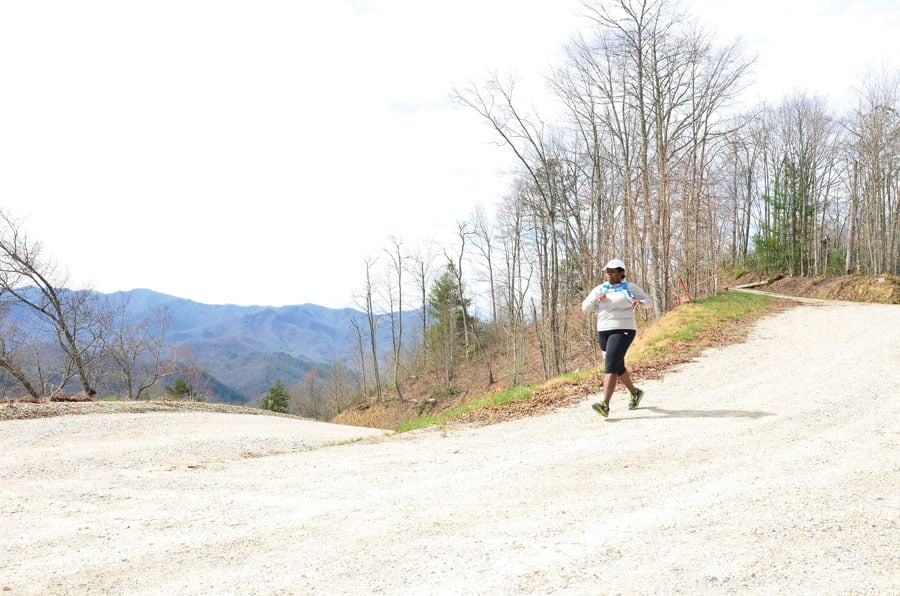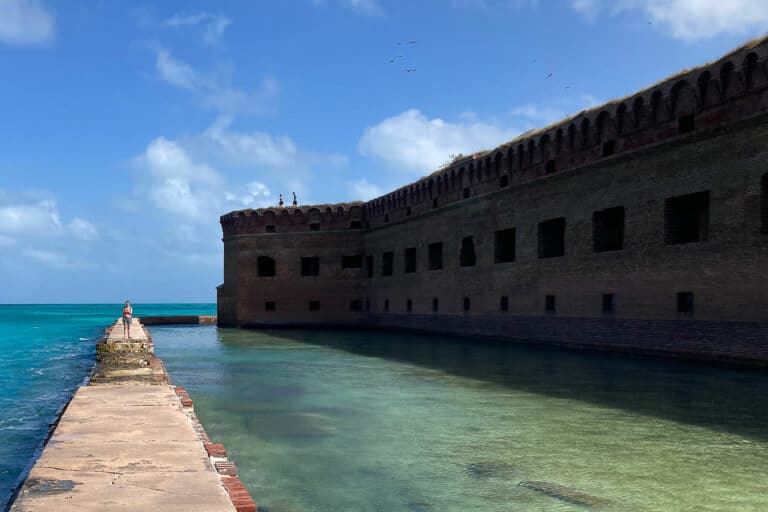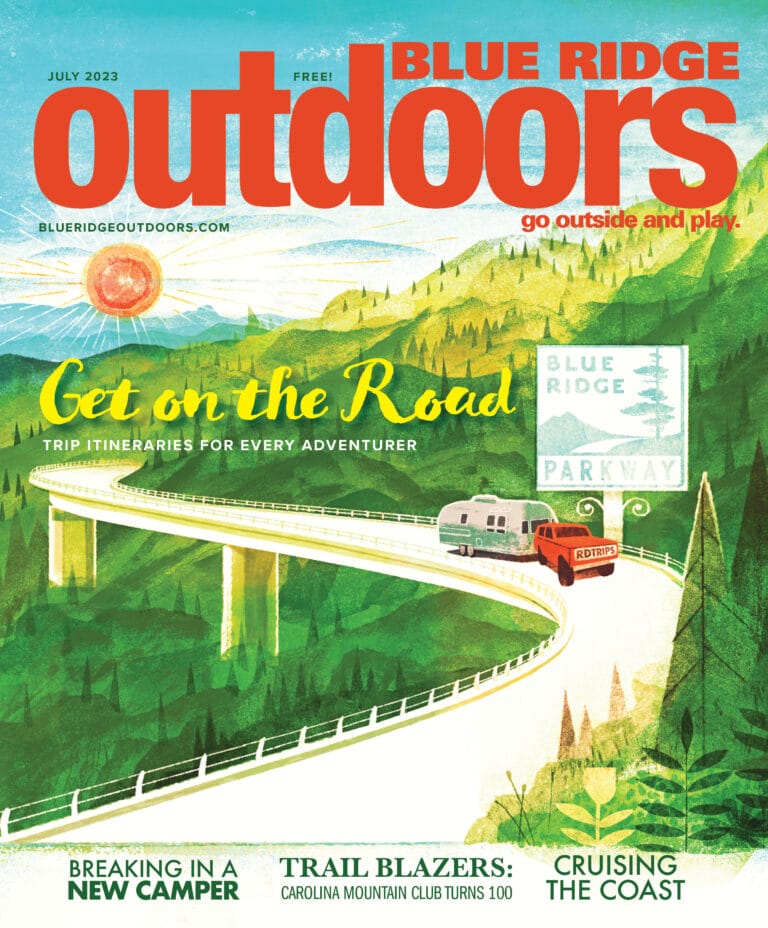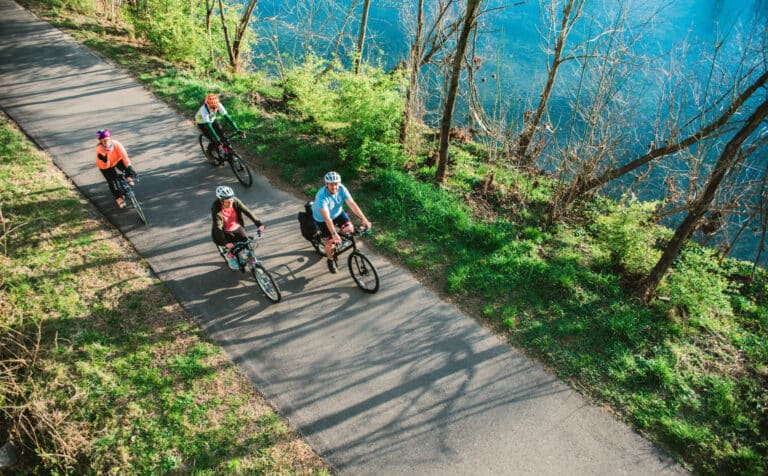Mirna Valerio pulled to the side of the highway and took some deep breaths. Panicked, and feeling like she was having a heart attack, she took a few minutes to regroup on the shoulder of a busy interstate. She finished the drive but scheduled an appointment with her doctor, who told her that if she wanted to watch her then-five-year-old son grow up, she needed to lose weight.
Valerio was a big woman based on sheer genetics, but before moving to New Jersey the year before, she’d kept active her whole life. She played field hockey and lacrosse in high school, and later ran occasional road races. Growing up in Brooklyn, she was used to traveling by foot. But since moving to New Jersey, she drove everywhere and didn’t have time to exercise anymore.
The doctor’s warning pushed her back toward exercise. Valerio started with 17-minute miles on a treadmill, then signed up for a road race. She volunteered at the New Jersey Trail Marathon and became aware the race was also offered in 50-kilometer, 50-miler and 100-miler versions.
“I thought, oh my god, these people are crazy,” says Valerio, 40. “The race director, Rick, one of the race directors of the NJ trail series, he’d say we’ll see you next year at the trail marathon. Then I signed up and just did it,” in 2012.
Encouraged by her newfound trail-running community, she did the same with a 50K trail race a year later. She struggled during the race but just kept going. She remembers the encouragement from volunteers and other runners, and at the finish line, “I was hooked,” she says. “I can’t say I was hooked while I was doing it, but the minute I finished, I thought, wow, that was great. I’m going to do it again, and I’m going to better my time.”
As of November, Valerio had run seven ultramarathons, including her first 100K, the Javelina 100K in Arizona, which took place on Halloween and All Saints’ Day.
She doesn’t exactly burn up the trails, running a roughly 12-minute pace most of the time, but Valerio, who stands 5 feet, 7 inches, runs doggedly, and often. She’s displayed discipline throughout her life, beginning with her vocal training at the Juilliard Pre-College Division, a program of the New York City music academy which prepares singers and musicians for conservatory. Instead of singing professionally, she channels her energy into teaching and running.
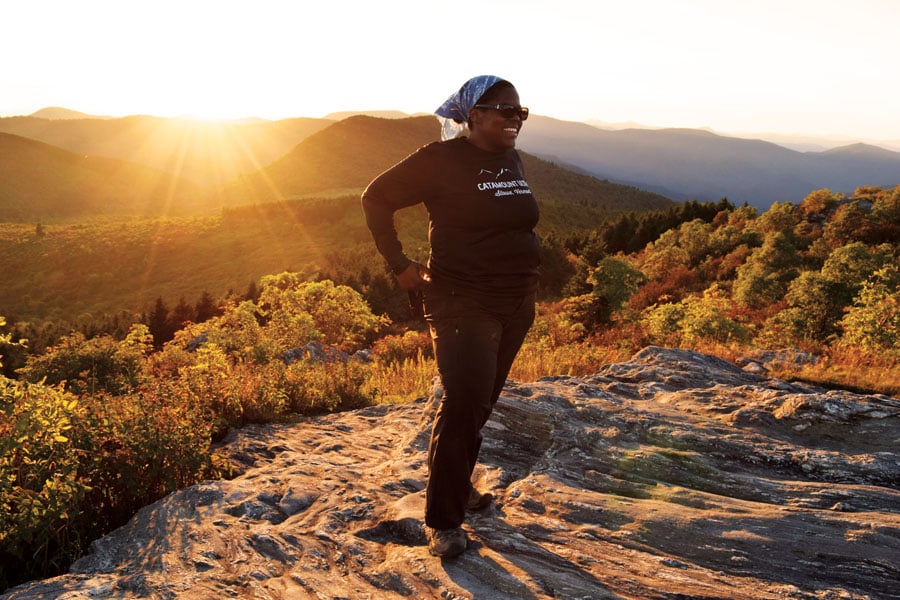
Valerio now lives in the foothills of Appalachia in Rabun Gap, Georgia, where she teaches and coaches cross country at a private school, and she finds few things more satisfying than hitting a local trail.
“Personally what drives me to the trails is being outdoors,” Valerio says. “I love living in the country. I was a city girl but I love being in the country and being in nature as much as possible. It makes me a healthier person, makes me a nicer person. I just love the fellowship of being a human in nature. We’re meant to be outside, we’re meant to be moving outside.”
Valerio’s not sure of her maximum weight back in New Jersey, but early in her renewed exercising, when she’d noticeably lost weight, she checked the scale: 302 pounds. Today she weighs about 240 pounds, a fairly steady figure that serves as inspiration to her supporters and a target for trolls and detractors on social media and her popular blog, Fat Girl Runs.
She started writing FGR in 2011 while training for the Marine Corps Marathon in Washington, D.C., which she has now run four times. Her posts focused not on the goal of weight loss—“The weight was coming off, so I wasn’t concerned about it and didn’t care about what others thought.”—but about health and fitness generally. Sometimes months passed between posts.
Then, early last year, Valerio received an email from Rachel Bachman, the Wall Street Journal’s fitness and exercise writer. The ensuing story boosted her traffic before an extended profile in Runner’s World a few weeks later exploded it. Valerio had become an inspirational icon for a certain segment of would-be runners who just needed a nudge in the right direction.
For her part, Valerio is bemused by the attention.
“A lot of people say, thank you for being out there, thank you for letting people see you, thank you for being you, thank you for giving me permission to go outside and run and show my body, to try to run even though I’m fat. That’s surprising to me that there were so many people afraid to exercise or run out in public and let people see them. That’s depressing, but also really cool it opened the door for them.”
As a teacher, both in her personality and profession, Valerio has embraced the role of inspiration, using motivational advice and selfies alike to reach her audience. In 2016, she wants to run at least a couple more 100K races, a triathlon, and her first New York City Marathon. Eventually she wants to run a 100-miler, but she’s doubtful it will happen this year.
Valerio offers four pieces of advice: First, just get outside, no matter the weather. It will pay off on numerous levels. Second, turn off your television, computer and phone more often. Third, engage your children in outdoor activities. Finally, “just lace up and go.”
“You’ve got to let go of preconceived notions of what running is,” Valerio says. “If you think you’re running, you’re running. Just because someone is faster doesn’t mean they’re more of a runner than you are. Let go of all of that. Just get outside and try.”
Michael Wardian started running because it was cheap and efficient.
The former college lacrosse player had laid down his stick during the tail end of his junior year but wanted to stay fit. “I picked up running because it was cheap and I was poor,” Wardian says. “It was really effective, because you could do an hour run and be good for a workout for the day.”
He started running longer and longer, and then while visiting a friend’s house during Easter, his friend’s mother talked about recently completing the Boston Marathon. “I thought if that lady can run a marathon, I can run a marathon,” Wardian says. “I asked her if she could help me, and she was kind enough to give me a program. Now I know, she just copied it out of a training manual.”
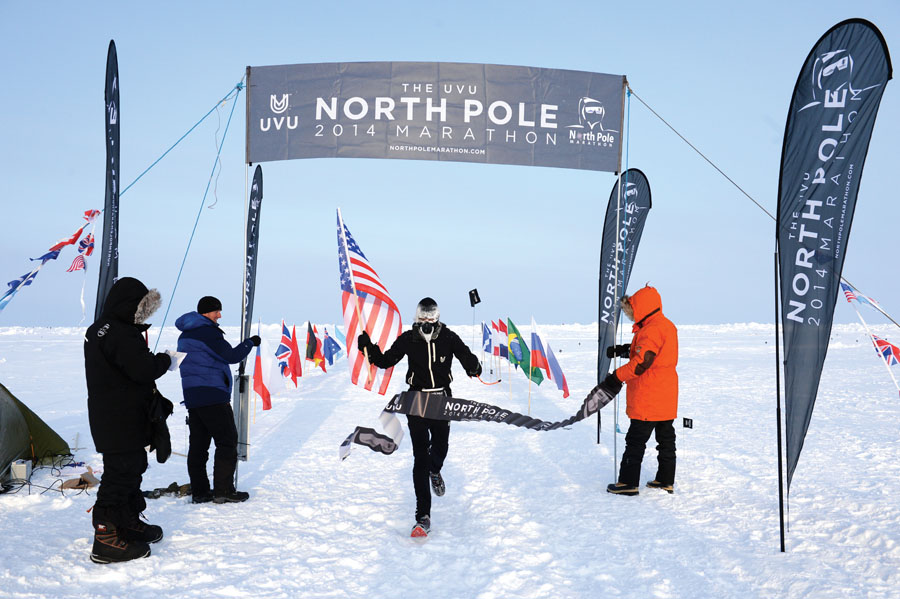 He was hooked. Today, Wardian, 41, who lives in Arlington, Virginia, has become a running celebrity. He qualified for the Olympics in 2004, 2008, and 2012, and although he didn’t actually compete he did represent the United States in 50K and 100K world championship races over that stretch.
He was hooked. Today, Wardian, 41, who lives in Arlington, Virginia, has become a running celebrity. He qualified for the Olympics in 2004, 2008, and 2012, and although he didn’t actually compete he did represent the United States in 50K and 100K world championship races over that stretch.
It made sense for Wardian to make the jump from marathons to ultras, but even he has been surprised by his 2015, which included the Vermont Marathon, the Western States 100 Miler, the 105K Buff Epic Run, the SpeedGoat 50K, the Chaski Challenge 80K in the Andes Mountains, and the Spartathalon—a 246K run from Athens to Sparta.
All the while, Wardian has maintained a regular job as an international ship broker specializing in vessels carrying humanitarian food-aid cargo.
“As I was growing up, I wanted to be the best lacrosse player in the world. There’s not a huge future in that,” Wardian says. “I never thought of myself as a runner, but now I’m one of the best in the world at what I do. It’s cool to get to challenge yourself against people in the North Pole, or Antarctica, or the far east. In college I would have been happy to finish a marathon. Now I’ll do a 100-mile race and the next weekend do a 50-miler. I race back to back to back.”
Wardian’s advice for other runners? Be consistent, even if it’s only running short distances. “It builds on itself and becomes part of who you are and what you do,” he says. “You start to crave it, then get faster as your body becomes used to it. It’s very reflective of the amount of time you put into it. Mostly it’s this: If you do the work, you get the results. There are no judges in this sport. The clock is the clock no matter where you are in the world. I like that about it.”
SHINING
Sophie Speidel got hooked on trail running during an early version of Blue Ridge Outdoors’ own Blue Ridge Burn 10K race in the late ’90s, when it was held at Walnut Creek Park near Charlottesville, Virginia.
That event launched a passion that most recently culminated in the completion of her tenth—and final—Hellgate 100K. Afterward, Speidel took to her running site, Shining’s Ultra Blog, to reflect on the experience.
“I had taken a calculated risk for this final ride, gambling that the warm 50 degree temps overnight and 70s during the day would not be an issue; I was wrong,” Speidel wrote. “After 42 miles of cruising comfortably near PR pace, on the hot grind up from Bearwallow Gap, the course once again reminded me who was in charge. And that’s the way it should be.”
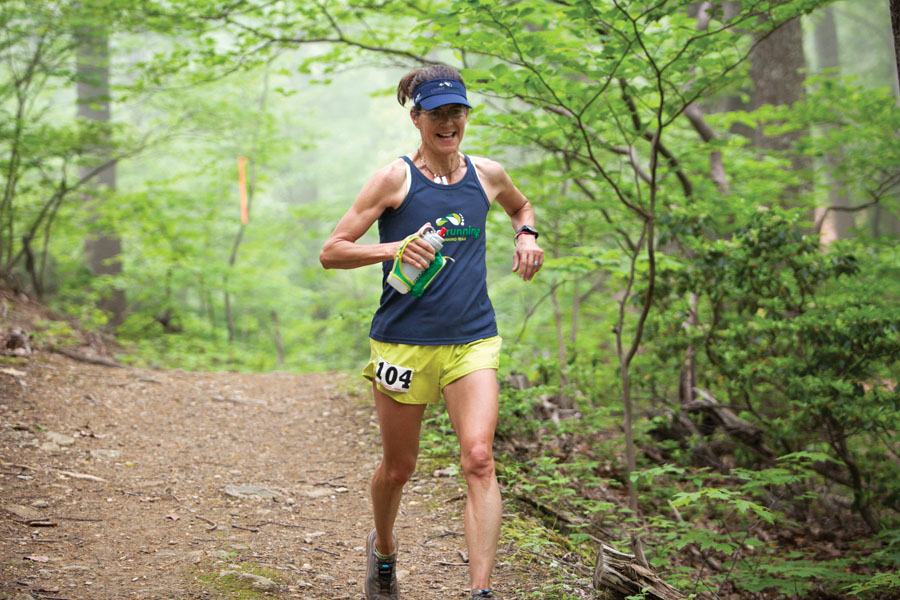 Speidel has been an athlete for her whole life, including playing lacrosse for the University of Virginia. After graduating, she and her husband both participated in sprint and international-length triathlons. She dabbled in road marathons before discovering trail running at the Burn.
Speidel has been an athlete for her whole life, including playing lacrosse for the University of Virginia. After graduating, she and her husband both participated in sprint and international-length triathlons. She dabbled in road marathons before discovering trail running at the Burn.
Ahead of her 40th birthday, Speidel heard about the Hard Rock 100 and the Barkley Marathons, both 100-mile trail races that attract an intense bunch of grizzly runners. She ran her first ultra in 2002 at the Holiday Lake 50K near Appomattox, Virginia, and then a year later ran her first 50-miler at the Mountain Masochist Trail Run near Lynchburg.
“I was really hooked,” Speidel says. “Ultra-running attracts a lot of likeminded folks, refugees from other endurance sports: road marathons or triathalons or folks being athletic for the first time in their lives. That’s what is attractive for me, just the people.”
Speidel, 53, runs from her home base in Charlottesville, where she lives with her husband. They’ve raised three children, ages 23, 21 and 18, two of whom have also played lacrosse at the collegiate level. When she first got into ultra-running, those children were 9, 7 and 4. Running provided an outlet for release.
In a race, “you just have to focus,” Speidel says. “I’m a mom. How great is it when all you have to worry about is, are you eating enough? Are you moving at a reasonable pace? Isn’t it beautiful out tonight? Are you eating enough? You have to be very present, and pay attention to things you don’t normally get a chance to think about. I think about the moment I’m in. I check in.”
That enables her to be more present when she is with her children, her students or the young athletes on the junior varsity lacrosse team she coaches. In fact, her “shining” nickname was bestowed on her by her 2005 team in honor of the Aaron Carter pop song, “Girl You Shine.”
Don’t be surprised if you see one of those girls, inspired by Speidel, coming sometime soon to a trail race near you.
WARRIOR
True runners become consumed by what began as a hobby, spending more time on the trail and running through life’s ups and downs.
Anita Walker Finkle ran through cancer and out the other side. Finkle, 49, a Roanoke resident since 2003, started running in high school, first to supplement her soccer play and then as her primary focus. She walked onto the cross-country teams first at the University of Texas at El Paso and then at West Virginia University.
Finkle ran her first marathon in 1996. Later, as she trained for more marathons, one of her training partners talked her into signing up for her first ultra, the Beech Mountain 50K in 2001. The following year she ran the Umstead 100, her first 100-miler. In January 2002, she met her future husband at the finish line of the Salem Lakeshore Frosty 50K. The following weekend they went on their first date, both running the Charlotte Marathon.
“That was our social life, to go out and run,” Finkle says. “I think I always liked running and hiking, but I didn’t like carrying the big backpacks and everything. Here in Roanoke, this is trail mecca. It’s so beautiful and the people are so good to hang out with.”
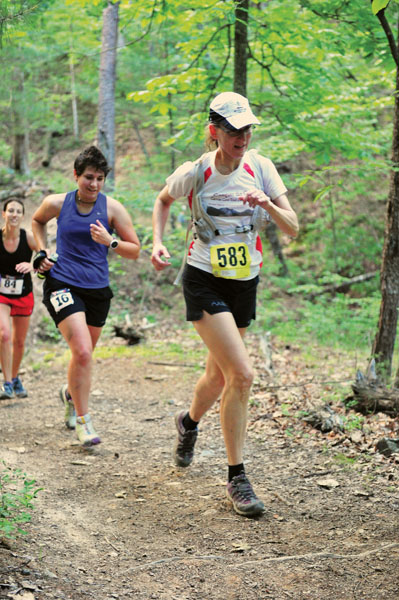
In 2010, Finkle went in for a mammagram after she found a lump in her breast. Doctors told her the lump was just a cyst, but to be cautious they took a biopsy. Initially the cyst looked to be non-invasive, but further investigation revealed a highly aggressive cancer that required not only surgery but chemotherapy. Those treatments lasted from July through September and were followed by a course of radiation.
During radiation treatment, Finkle not only ran a 5K race in Roanoke but began training for the Indianapolis Marathon. “It was real slow, but [husband] Jay ran the whole way with me. I was exhausted but I was able to do it.”
Finkle continued periodic intravenous treatment until the following spring, and then “I was just able to run through everything,” she says. That included the Crooked Road 24 Hour Ultra in 2011, along with a handful of 50Ks and, last year, the Umstead 100 again.
In late 2011, Phil Phelan set out to quit boozing and turn his energies toward a life passion: documenting all of the trails, both official and vigilante, that ran through North Carolina’s Linville Gorge.
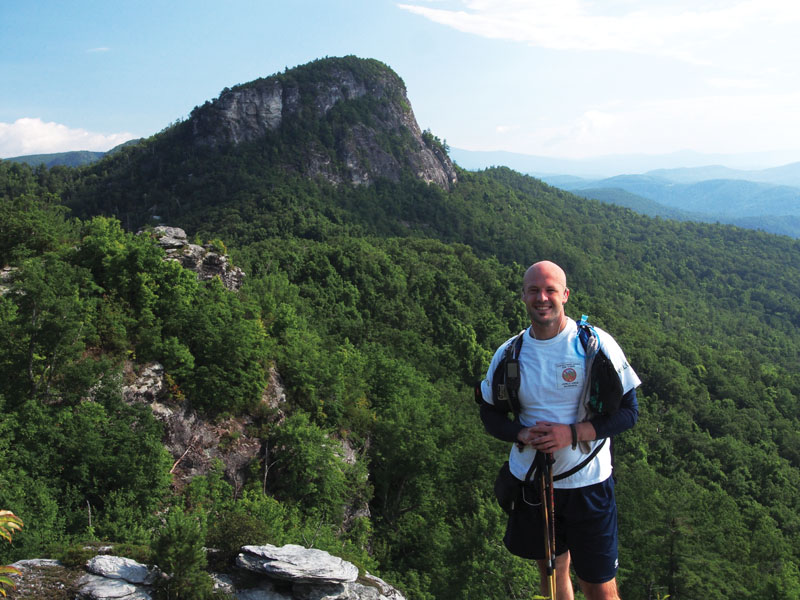 Phelan, 35, had grown up exploring the gorge. He moved with his family from Texas to Raleigh, North Carolina, when he was 9 and spent weekends and summers traveling back and forth between the city and gorge. When he went to work on the guidebook, Phelan decided to really delve into the gorge’s many trails.
Phelan, 35, had grown up exploring the gorge. He moved with his family from Texas to Raleigh, North Carolina, when he was 9 and spent weekends and summers traveling back and forth between the city and gorge. When he went to work on the guidebook, Phelan decided to really delve into the gorge’s many trails.
“The U.S. Forest Service acknowledges 17 trails; there’s more like 300, the majority of them cut illegally,” Phelan says. While he doesn’t want to promote illegal or vigilante trails, he says they’re an important part of understanding how the gorge trail system works.
“The problem is the fact that you have a trail—let’s say you head down on Babel Tower Trail,” he says. “At 1.4 miles you’ll take a right. But there’s an illegally cut trail not on the map one mile down. You’ll come down to that illegally cut trail that’s not on the map and get lost. That’s the problem with Linville these days. When you’re leaving things like that out, what’s a guidebook for if it’s not telling you everything?”
Another aspect of Phelan’s fascination with Linville Gorge involves its cliffs and boulders. He’s constantly looking for unmapped and undiscovered spots to climb, both within and beyond the gorge.
Although most of his work goes toward his books, Phelan also has won attention for his record-setting runs. He just notched the fastest-known-time on Skyline Drive and the Blue Ridge Parkway, completing the 575-mile journey in just over 17 days.
[divider]Read More[/divider]
